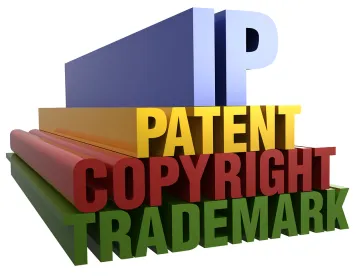This Monday, the Supreme Court unanimously ruled in Fourth Estate Public Benefit Corp. v. Wall-Street.com, LLC, 586 U.S. ____ (Mar. 4, 2019), that a copyright owner may commence an infringement suit only when the Copyright Office determines whether or not to register a copyright, as opposed to when the owner submits an application and fee for registration. The widely-followed case resolves a simple question, but has far-reaching practical implications for U.S. copyright litigation.
At issue in the case was whether a copyright owner may file an infringement action upon submission of a valid copyright registration application, or only after review by the Copyright Office. Section 411(a) of the Copyright Act states that “no civil action for infringement of the copyright in any United States work shall be instituted until…registration of the copyright claim has been made in accordance with this title.” Until the Supreme Court’s ruling this week, courts disagreed over whether “registration” occurred at the time the Copyright Office accepted registration of a copyright (the “registration approach”) or at the time a claimant submitted a proper application for registration (the “application approach”). The application approach allows a litigant to proceed with an infringement suit as soon as a party has taken all of the necessary steps to register the copyright at issue; under the registration approach, however, a party must wait for the Copyright Office’s affirmative acceptance or rejection, despite knowing that suit can proceed in either event. Many entertainment companies and artist rights organizations strongly favored the application approach, which gives copyright owners more time to defend their intellectual property and more flexibility to conduct anti-piracy efforts, particularly for online infringement. Meanwhile, advocacy groups and government entities in favor of the registration approach argued a determination from the Copyright Office is necessary to filter out unfounded copyright claims. Over the years, circuit courts have issued varied rulings on this issue, prompting Supreme Court review.
In this case, Fourth Estate, a news organization, licensed news articles to Wall-Street.com, a news website. After terminating the license agreement, Wall-Street.com continued to exploit Fourth Estate’s new articles, so Fourth Estate brought a copyright infringement action against Wall-Street.com for failure to remove the articles. At the time of filing the lawsuit, Fourth Estate had submitted copyright registration applications for its news articles, but the Copyright Office had yet to act on the applications. Based on a close textual reading of the Section 411(a), the District Court dismissed Fourth Estate’s complaint after determining that registration had not yet been made under the Copyright Act. The Eleventh Circuit affirmed the decision.
Before the Supreme Court, Fourth Estate argued, amongst other claims, that the registration approach disadvantages copyright owners’ ability to enforce their rights given the significant wait time for receiving a registration decision from the Copyright Office (particularly when viewed against the Copyright Act’s three-year statute of limitations on an infringement claim). Further, Fourth Estate argued that the Copyright Act often refers to the act of “making” registration, implying that registration is linked to the actions of the applicant, not the Copyright Office.
The Supreme Court rejected Fourth Estate’s arguments and adopted the registration approach. Writing for the Court, Justice Ginsburg relied heavily on statutory interpretation of the Copyright Act to dismiss Fourth Estate’s arguments, pointing to several sections of the Copyright Act that would be incompatible with Fourth Estate’s definition of registration. The Court also disposed of Fourth Estate’s Congressional history and intent arguments, as well as practical concerns. Justice Ginsburg noted that while the processing period for a copyright registration application has grown in recent decades (e.g., a seven month processing period), the registration approach still leaves ample time between registration and the running of the statute of limitations for initiation of a suit.
Justice Ginsburg admitted that the application framework has not operated entirely the way Congress originally intended, but maintained that any adjustments to the application process are for Congress, not the courts, to address. It remains to be seen whether those favoring the application approach will turn to Congress to allay their concerns. Regardless of the policy underlying its decision, the Supreme Court’s opinion provides clarity on the copyright application process by adopting the registration approach.
While copyright owners must wait for registration to file an action, there are still ways to initiate and prepare for copyright litigation prior to registration. As the Supreme Court noted, copyright owners may file for preregistration in certain statutorily-provided circumstances where there is a great risk of predistribution infringement (e.g. for movies or musical compositions). Additionally, copyright owners of live broadcasts may sue for infringement prior to registration. If legal action is contemplated, copyright holders may also take advantage of expedited registration or “special handling” procedures for additional fees at the Copyright Office.
Going forward, copyright owners going through the traditional registration process should be sure to apply for registration as early as possible. Rightsholders are able to recover damages incurred prior to registration, but the Supreme Court opinion will certainly affect their leverage against accused infringers; registration is a prerequisite for certain powerful remedies like statutory damages and attorney’s fees and, absent an exception, are not available for an infringement “commenced” before the effective date of registration.


 />i
/>i

